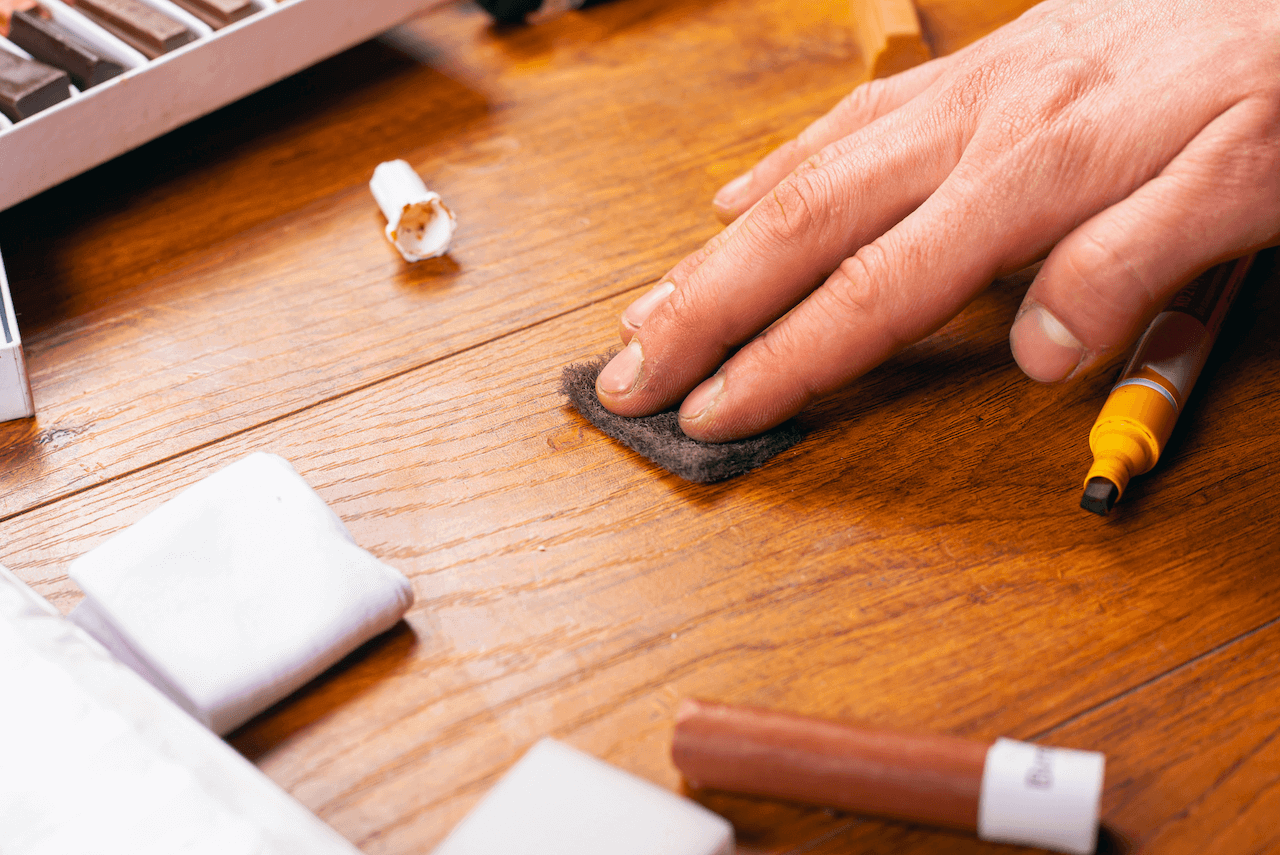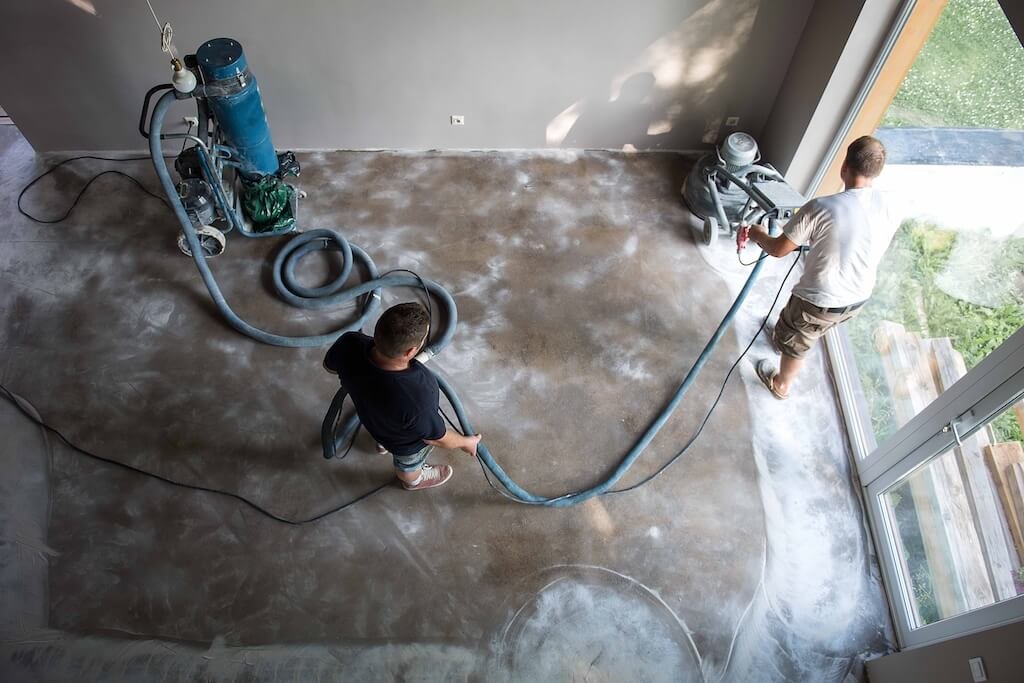

£25-£150pm2
Wood flooring installation costs in the UK can also be influenced by the intricacy of the installation process. If the area to be floored has unique features such as curves, angles, or stairs, the installation may require more time and skill, leading to higher labour costs. It’s important to communicate any specific requirements or challenges to the installers during the quoting process to ensure an accurate estimate of the total cost. All jobs are professionally surveyed with an accurate estimate provided being as precise as possible with the information available.
Another consideration when installing wood flooring is the need for preparation work. This includes removing existing flooring, such as carpet or laminate, and ensuring the subfloor is clean, level, and dry before installing the wood flooring. If additional preparation work is required, such as moisture barriers or soundproofing, this will add to the overall cost of the installation.
The cost of wood flooring in the UK can also vary depending on the finish and style you choose. Prefinished wood flooring, which comes already sealed and finished, may cost more upfront but can save on labour costs as it requires less finishing work during installation. Unfinished wood flooring, on the other hand, allows for more customisation in terms of colour and finish but may require additional time and expense to complete the finishing process on-site.
It’s important to factor in the maintenance costs of wood flooring when considering the overall cost of installation. While wood flooring is durable and long-lasting, it does require regular maintenance to keep it looking its best. This includes routine cleaning, sanding, and refinishing every few years to maintain its appearance and durability. These maintenance costs should be considered when budgeting for wood flooring installation.
When planning for wood flooring installation, it’s also important to consider the environmental impact of your choices. Opting for sustainably sourced wood flooring or reclaimed wood can not only add a unique and eco-friendly touch to your space but also contribute to a more sustainable future. While environmentally friendly options may have a slightly higher upfront cost, the long-term benefits can outweigh the initial investment.
In conclusion, the cost of installing wood flooring in the UK is influenced by a variety of factors, including the type of wood, size of the area, labour costs, additional expenses, installation complexity, preparation work, finish and style choices, maintenance costs, and environmental considerations. By carefully considering these factors and planning ahead, you can ensure a successful wood flooring installation project that adds beauty, value, and warmth to your home for years to come.
Here are some additional factors to consider when it comes to installing wood flooring.
1. Moisture and Humidity: Wood flooring is sensitive to changes in moisture and humidity levels. In areas with high humidity or moisture, such as bathrooms or basements, it’s essential to choose the appropriate type of wood flooring that is specially treated to withstand these conditions. Additional moisture barriers or sealants may also be necessary to protect the wood flooring and prevent damage.
2. Acoustic Considerations: If you’re installing wood flooring in an upper-level space or in a room where noise reduction is important, you might want to consider acoustic underlays. These underlays help absorb sound and reduce impact noise, creating a quieter and more comfortable environment.
3. Subfloor Preparation: The condition of the subfloor can impact the overall cost of installation. If the subfloor is uneven or damaged, it may require additional preparation work, such as levelling or repairing, before the wood flooring can be installed. This can add to the labour and material costs.
4. Warranty and Guarantees: When choosing a wood flooring supplier or installer, it’s important to consider the warranty and guarantees they offer. A reputable supplier will provide warranties on the quality and durability of their products, as well as guarantees on the installation work. This can give you peace of mind and protect your investment in case of any issues.
5. Furniture and Accessory Placement: It’s important to plan the placement of furniture and accessories in the space where the wood flooring will be installed. Heavy furniture pieces, such as pianos or large cabinets, may need to be moved or lifted during the installation process, which could incur additional costs. It’s a good idea to discuss this with the installers beforehand to ensure a smooth installation process.
6. Timeframe: Consider the timeframe for the installation project. Wood flooring installation can take several days or even weeks, depending on the size of the area and the complexity of the installation. It’s important to factor in the time required for installation when planning your project, especially if you have specific deadlines or events scheduled.
Remember, it’s always recommended to consult with professionals and obtain multiple quotes before proceeding with the installation. They can provide personalised advice based on your specific requirements and help you make informed decisions about the type of wood flooring, installation methods, and overall costs involved.
Installing wood flooring can be a significant investment, but with careful planning and consideration of these factors, you can create a beautiful and enduring space that adds value and enhances the aesthetics of your home.
What factors should be considered when installing wood flooring in areas with high humidity or moisture?
When installing wood flooring in areas with high humidity or moisture, there are several important factors to consider to ensure the longevity and durability of the flooring:
1. Wood Type: Choose a wood species that is naturally resistant to moisture, such as oak, maple, or bamboo. These types of wood are less prone to warping, swelling, or cupping when exposed to high humidity or moisture.
2. Engineered Wood Flooring: Consider using engineered wood flooring instead of solid wood flooring. Engineered wood consists of multiple layers of wood veneer with a plywood or high-density fiberboard (HDF) core. This construction makes it more stable and less prone to expansion and contraction caused by changes in humidity. Engineered wood flooring is often a better choice for high-moisture areas like bathrooms or basements.
3. Moisture Barrier: Install a moisture barrier or vapour barrier between the subfloor and the wood flooring. This barrier helps to block moisture from seeping up into the wood and protects it from potential damage. There are various types of moisture barriers available, such as plastic sheeting or specialised underlayments.
4. Acclimation: Allow the wood flooring to acclimate to the environment before installation. This involves storing the wood flooring in the room where it will be installed for a certain period of time. This allows the wood to adjust to the temperature and humidity levels of the space, minimising the risk of expansion or contraction after installation.
5. Proper Subfloor Preparation: Ensure that the subfloor is clean, level, and dry before installing the wood flooring. Any moisture or unevenness in the subfloor can affect the wood flooring’s stability and integrity. It may be necessary to use a moisture metre to check the moisture content of the subfloor before installation.
6. Sealing and Finishing: Apply a high-quality sealer or finish to the wood flooring to add an extra layer of protection against moisture. This helps to seal the wood and prevent moisture from penetrating the surface. It’s important to choose a finish that is specifically designed for high-moisture areas.
7. Maintenance: Regularly clean and maintain the wood flooring to prevent moisture-related issues. Clean up spills immediately, use a humidifier or dehumidifier to maintain consistent humidity levels, and avoid excessive water or moisture exposure.
8. Professional Installation: Hiring a professional installer who has experience with installing wood flooring in high-moisture areas is recommended. They can ensure that the installation is done correctly, taking into account the specific requirements of the space and the wood flooring.
By considering these factors and taking the necessary precautions, you can enjoy the beauty of wood flooring in high-humidity or moisture-prone areas without worrying about potential damage or issues. Consulting with flooring professionals or experts can provide you with personalised advice and guidance based on your specific situation.
FAQs
How much does wooden flooring installation cost?
The cost of installing wooden flooring in the UK can vary depending on several factors, including the type of wood, quality, installation method, and the size of the area to be covered. On average, the cost can range from £25 to £150 per square metre, including materials and installation.
Does the cost of wooden flooring installation include VAT?
The cost of wooden flooring installation may or may not include VAT, depending on the supplier or contractor. It’s important to clarify this with them before making a purchase or signing a contract.
Are there any additional costs associated with installing wooden flooring?
In addition to the cost of materials and installation, there may be other expenses to consider. These can include removing old flooring, subfloor preparation, baseboard installation, and any necessary repairs or modifications to the existing floor. It’s best to consult with a professional installer to get a comprehensive estimate.
Are there different types of wooden flooring that vary in cost?
Yes, there are various types of wooden flooring available in the UK, each with its own cost range. Solid hardwood flooring is generally more expensive than engineered wood or laminate flooring. Exotic wood species and specialty finishes can also increase the cost. It’s important to research and compare different options to find the one that fits your budget and requirements.
Can I save money by installing wooden flooring myself?
While it is possible to install wooden flooring yourself in the UK, it requires a certain level of skill and knowledge. If you have experience in flooring installation, you may be able to save on labour costs. However, improper installation can lead to problems and additional expenses down the line. It’s recommended to consult with a professional installer to ensure the job is done correctly.
Are there any ongoing maintenance costs for wooden flooring?
Wooden flooring in the UK requires regular maintenance to keep it in good condition. This can include cleaning, refinishing, and occasional repairs. It’s important to factor in these maintenance costs when considering the overall cost of wooden flooring.
How can I get an accurate cost estimate for installing wooden flooring?
To get an accurate cost estimate, it’s recommended to consult with a professional flooring installer. They will be able to assess your specific requirements, measure the area, and provide a detailed quote based on the type of wood, installation method, and any additional services needed.
Remember, while cost is an important factor, it’s also essential to consider the quality of materials and workmanship when choosing wooden flooring. Investing in a durable and well-installed floor can save you money in the long run.


